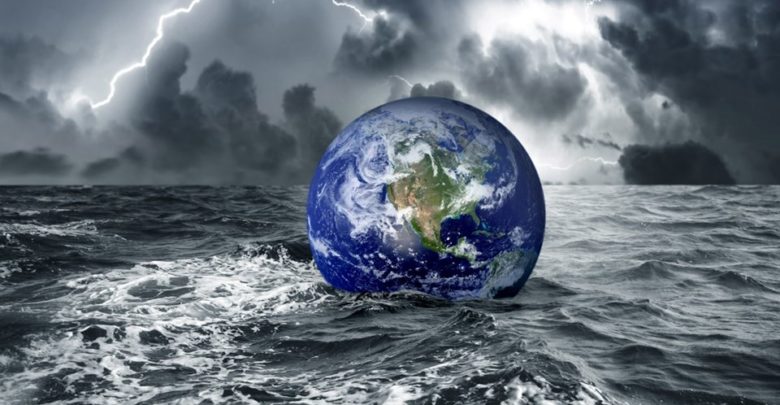تدبير استعمال الماء المنزلي بالواحات المغربية: بين تحول نمط العيش وتعمق أزمة الماء، حالة واحة حوض واد الحجاج (إقليم وارززات)- المغرب
Domestic water management in Moroccan Oases: Between the transformation of lifestyle and the deepening water shortage, the Wadi Hajjaj basin as a case (Ouarzazat Province)- morroco

اعداد :
- المداني بونيت: طالب باحث بسلك الدكتوراه، مختبر التنمية وإعداد المجال، كلية العلوم الانسانية والاجتماعية، جامعة ابن طفيل – القنيطرة، المغرب
- ذ. عبد الصادق بلفقيه: أستاذ التعليم العالي، تخصص الجغرافيا، كلية العلوم الإنسانية والاجتماعية، جامعة ابن طفيل- القنيطرة، المغرب.
المركز الديمقراطي العربي : –
- مجلة الدراسات الأفريقية وحوض النيل : العدد السادس والعشرون حزيران – يونيو 2024 ,مجلد 07 مجلة دورية علمية محكمة تصدر عن #المركز_الديمقراطي_العربي ألمانيا – برلين .
-
تُعنى المجلة بالدراسات والبحوث والأوراق البحثية عمومًا في مجالات العلوم السياسية والعلاقات الدولية وكافة القضايا المتعلقة بالقارة الأفريقية ودول حوض النيل.
Journal of African Studies and the Nile Basin
للأطلاع على البحث “pdf” من خلال الرابط المرفق :-
الملخص:
حضي الماء باهتمام مختلف الفروع العلمية، نظرا لأهميته كمادة حيوية، وكذا لمظاهر الندرة والخصاص التي يعرفها في العالم بشكل عام، ومجالنا الوطني بشكل خاص، خصوصا بالمناطق المشرفة على الصحراء، ومنها مجال دراستنا واحة حوض واد الحجاج. بين وضعه الطبيعي الهش، وتحول نمط عيش سكانه، يكمن الإشكال الذي أخدنا للبحث في جانب من جوانب أزمة الواحات، فعلى الرغم من استمرار اختلال توازن مجالنا الواحي موضوع الدراسة، أخد نمط وسلوك عيش سكانه ينفتح بوثيرة سريعة على أنماط عصرية أساسها الإقبال على استهلاك الماء، في المقابل تم الإحتفاظ بكل قواعد تدبير الواحة، دون تكييفها لتوازي ذلك التحول، وبقيت التدخلات الرسمية لا تُجاوز تلك الاجراءات السطحية المتعلقة بتزويد الفلاحين بالشتائل، مع نصائح وإرشادات. نهجنا الطريقة الإستقرائية، في تكاملها مع الاستنباط، والمنهج الوصفي، واعتمدنا التحقيقات الميدانية مع الأسر، وخلصنا إلى أن نمط عيش السكان بمجالنا تحول بشكل واضح من خلال مظهرين أساسين: الأول تغير بنية الأسر التي انتقلت من الممتدة إلى النووية حيث بلغت نسبة زيادة الأسر 24% بين إحصاء 1994 و 2014، مع تسجيل استقرار في البنية الديمغرافية نظرا للهجرة. أما الثاني فهو مرتبط بالأول في جانبين: أوله إقبال مهم على التجيهزات المنزلية المستهلكة للماء (آلة غسل الملابس، البستان الخاص، الحمام، المطبخ العصري،…) داخل المساكن؛ وثانيه: تقلص نسبة ممهتني الفلاحة إلى 28% والتي كانت في السابق النشاط الأساسي. وهذه النتائج تؤكد توجها نحو الإستهلاك المتزايد للماء، و تهميش الواحة التي لم تعد محور عيش وإشغال سكانها، أمام هذا الوضع، فالدولة بمؤسساتها الوصية مفروض عليها اليوم التدخل لإستعادة الواحة جزء من توازنها، بعدا ما تخلف عن ذلك الإنسان الذي سهر عليه لفترات زمنية طويلة، كل ذلك خوفا من الإنهيار التام لمنظومة الواحة الهشة.
abstract
Water has attracted the interest of various scientific branches due to its importance as a vital material, as well as its shortage in today’s world in general, and our national field in particular, especially in the areas overlooking the Sahara desert, including our case study, the Wad Al-Hajjaj basin. Between its crisp natural condition, and the transition of the lifestyle of its residents, this problem pushes us to look for the main reasons behind the oasis crisis. Despite the continued imbalance in our field, which is the issue of this study, the lifestyle and behavior of its inhabitants opened up quickly to modern patterns based on the water demand. In contrast, all the rules of the Oasis management were maintained, without adapting them to match that change. Official interventions did not go beyond these superficial measures related to supplying farmers with watersheds, with advice and guidance. Our approach is an inductive method, in its integration with the deduction, and the descriptive approach, we also adopted field investigations with families, and we concluded that the lifestyle of the population in our field has changed through two main aspects: the first is the change in the structure of families that moved from extended to nuclear, where the rate of increase of families reached 24% Between the 1994 and 2014 census, with a record of stability in the demographic structure due to immigration. The second relates to the first in two aspects: The first is an important demand for water-consuming household appliances (laundry machines, private orchard, bathroom, modern kitchen,…) within the dwellings; Second: The percentage of peasant professionals that used to be the primary activity shrank to 28%. These results confirm a trend towards increased water consumption and the marginalization of the oasis, which is no longer the focus of people’s livelihood and occupation, in the face of this situation. The state, with its trusteeship institutions, is now obliged to intervene to restore the oasis to part of its balance, after the default of the person who was taking care of it for a long time, all that for the fear of the total collapse of the fragile oasis system.




